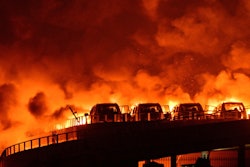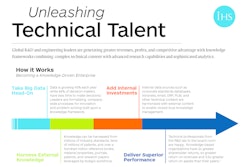
The financial repercussions of supply chain disruption to a business can be devastating. A recent study by Hendricks and Singhal—which analyzed 800 instances of supply chain disruption—found that companies on the receiving end experience a significant drop in sales, a decline in operating income, a fall in shareholder return and overall share price volatility. Companies are, therefore, increasingly leveraging next-generation technologies to identify and manage risks throughout their supply chain.
Global companies based in advanced countries are especially at risk as their suppliers are often in less-regulated countries with lesser emphasis on safety compliance. The high expectations of consumers, combined with the lesser compliance standards of suppliers, creates significant, intangible brand risks. Furthermore, the potential disruption in supply lines creates direct operational risks. This leaves companies struggling to find the most effective methods of identifying and mitigating supply chain risks—making the need for supply chain data more critical than ever before.
For example, the Port of Tianjin explosion in 2015 sent shockwaves through supply chains across the world. Approximately 160 people died, and almost 800 more were seriously injured by the explosions and consequent fires that engulfed the city. The Port of Tianjin trades with more than 600 ports in 180 countries. The disruption to businesses that bring their goods to market via Tianjin was immediate and will be felt for many years to come.
More stringent legislation pushes companies to be more aware of what is happening in their supply chains, with non-compliance becoming a target of regulatory agencies and non-governmental organizations (NGOs). One example is the European Union Timber Regulation (EUTR) that prohibits products derived from illegally harvested timber, requires traders to exercise due diligence, and requires records to be kept of suppliers and customers. Similarly, the Lacey Act in the United States was amended in 2008 to include a wider variety of prohibited plants and plant products, including products made from illegally logged woods, for import.
What does this mean for companies? Disasters—whether natural or caused by non-compliance—can disrupt supply lines and can damage brand reputation. Gibson Guitars, for example, famously admitted violating the Lacey Act, which resulted in monetary fines as well as some negative brand publicity. Another example of a damaging supply chain incident was the Rana Plaza building collapse in Bangladesh in which over 1,100 garment workers were killed and another 2,500 were injured. Beyond the lives and families who were permanently affected by this tragedy, apparel companies were dragged into the ensuing debate on whether multinational companies have a responsibility for ensuring supply chain health and safety compliance. Beyond individual companies reacting to potential risks in their respective supply chains, the Organisation for Economic Cooperation and Development (OECD) is reviewing how to enable greater due diligence and compliance for the entire apparel industry.
Whether complying with regional legislation, responding to NGO pressures within the industry and/or managing brand reputation for consumers, companies are being increasingly pressured to improve standards and compliance in their supply chains. Legislation can pressure companies to adopt rigorous policies to ensure compliance or, for example, face monetary penalties. Legislation, however, exists to enforce standards and does not exist to help companies manage the risks from within their supply chains, although that may result from legislative compliance. Understanding and addressing risks is the responsibility of each company.
For global companies with suppliers in all corners of the world, the most difficult aspect is pushing for transparency through the supply chain and finding methods of managing supplier stewardship. More and more companies are making use of technologies to identify where potential risks exist, as well as the severity and probability of such risks. Leveraging technology gives a company a streamlined, centralized and manageable way to collate data, establish information flows, assess risks, enforce compliance and monitor performance. These advanced software tools help to automate processes, thereby allowing supply chain professionals to allocate time on the more valuable activities of supplier engagement. Software tools further support supplier engagement by providing a platform for the two-way exchange of information.
Having quick access to the right information, and having the ability to take and manage actions helps to mitigate the probability and severity of potential issues—e.g. a factory found to have unsafe labor conditions, a warehouse out of compliance with local safety requirements, a production site vulnerable to flooding. The full impact of disasters like the Tianjin port explosion will not be understood for several years. It’s important to heed the lessons for supply chain risk management from such disasters.
The disruption to operations and consequences to brand image are tangible. We see a significant number of our clients utilizing technologies to streamline information management, management process and supplier stewardship. It remains imperative to ask yourself, “What potential risks are we exposed to?” Or worse, “Do we at least have visibility of potential risks?” It might just be time to find out.
Matt Scott is the director of business development at cr360.












